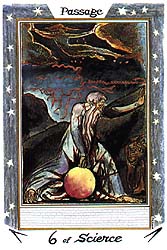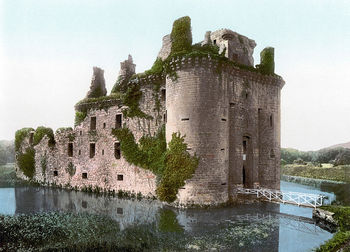When we open the dream door for others, it can lead to a true communion of spirits.
To play dream guide for another person, we need to know how to create a safe space where someone new to dream sharing can be helped to tell a dream, enter into a simple and focused discussion of that dream, receive helpful feedback and then be encouraged to take action to honor the dream and bring its energy into everyday life.
I have invented a process that enables us to play dream guide in this way in just a few minutes. I call it the Lightning Dreamwork process, because it is meant to be quick, like lightning, and to focus energy, like a lightning bolt. The process is explained in several of my books, including The Three “Only” Things.
I want to tell a fresh story about the gifts that can come from sharing dreams this way. It comes from a dreamer named Jeannette. It involves all of the good stuff: mutual dreaming with a family member, visits with the departed, practical guidance on health and diet, soul journeying, a clue from a dead poet, and a process for bringing all of this home and taking family relationships deeper, to a place of heart. And it all played out in a few hours this week.
Jeannette dreamed of her deceased mother, Agatha. In her dream, Agatha expressed concern about Jeannette’s father’s health; she wanted her daughter to make sure, for one thing, that he did not skip breakfast and paid attention to his blood sugar.
Jeannette got in touch with her father that day, and told him the dream. He had never been in the habit of sharing dreams, but he promptly confided that he, too, had dreamed of Agatha that same night. When he rose in the early hours, the first thing he did was to fix himself a light breakfast. He remembered that in his dream, he was traveling with his deceased wife through “perilous” country. They were looking for the home of someone named Blake. Agatha had trouble getting across something like a balcony, and he had to help her. They came to a fine lake in the woods that was not on their original itinerary.
Excited by her father’s sharing – quite untypical of him – Jeannette asked him the key questions that are part of our Lighting Dreamwork, starting with, “How did you feel when you woke up?'” Her father responded that he was happy to have dreamed of Agatha again; he felt that had moved beyond some rough patches in their previous relationship.
“Reality check?” Jeannette pursued. “What do you recognize in this dream in the rest of your life?’
Dad responded: “I wanted contact with your mother after she passed. I considered using a ouija board to contact her, but I knew you were against this. I was somewhat lost about the directions I should take in life after Agatha’s passing.” They had a friend named Blake, who lived in a remote hard-to-find location up in “nosebleed country”. Harking back to Jeannette’s dream, he said that he was aware that he was borderline diabetic, and needed to watch his blood sugar.
“If it were my dream,” Jeannette now said to her father, following a basic protocol of our Lightning Dreamwork, “Helping mom over a broken bit of balcony would relate to helping her over to the Other Side. Maybe Blake refers to William Blake as well as the friend in nosebleed country.”
As an action plan, they agreed to consider quotes from William Blake – who created many images of the soul’s journey and the condition of spirits after death – for Agatha’s headstone.
I am in you and you in me, mutual in divine love.
If a thing loves, it is infinite.
Lives in eternity’s sun rise.
This wonderful dialogue has taken daughter and father to a new depth in their relationship. I find their exchanges beautiful and deeply moving. With their shared sense of direct contact with Agatha, this feels like a true communion of spirits. I was struck by the fact that in Greek, Agatha means “good” and the agathadaimon is the “good angel” that guides the soul. It seems almost as if Agatha and her husband are playing guides for each other, one bringing very direct and practical counsel on health matters, the other serving as companion on a journey to a higher place, beyond death.
As I reflected on the possible significance of “Blake” in the father’s dream journey with his deceased wife, I noticed that right in front of me, on my desk, was an unopened deck of the William Blake Tarot of the Creative Imagination – the new edition of a tarot in which all the images are by Blake. I tore off the cellophane, opened the deck at random, and found myself looking at the 6 of Science (which corresponds to Swords in other decks).
This card is labelled “Passage.” It combines two scenes from Blake’s Book of Urizen. In the lower part of the card, Urizen, representing imagination caged by cognitive reasoning and selfishness, is in perilous territory. He can’t see the lion, who represents his ignored instincts, and life’s wild surprises. But in the upper part of the card, a female figure (Blake named her Enitharmon) personifies the creative imagination, seeking to push back the dark clouds and provide light to the soul traveler.
When I told Jeannette about the card I had drawn, she said she found this spoke to her very directly, because her father was a social scientist, while her mother had been a highly intuitive visual artist.
If you want to practice playing dream guide and partner like Jeannette, join us for my next online course in Conscious Dreaming, Conscious Living; it starts of February 7 and registration is open here.
6 of Science from the William Blake Tarot of the Creative Imagination by Ed Buryn.–


-thumb-350x262-20956-thumb-350x262-20957.jpg)